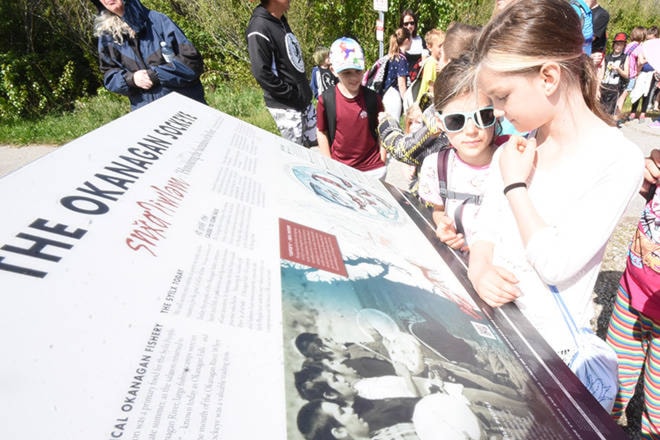A pair of educators are crediting greater inclusivity and involvement with the Penticton Indian Band for the vast strides in improving Indigenous graduation rates at the Okanagan Skaha School District (SD67).
Recently released data from the provincial government show SD67 Indigenous completion rates at 76 per cent for the 2016/17 school year, a one-point improvement over the year before, while the overall completion rate sat just above at 83 per cent.
Both of those numbers still mean youths are not graduating — about one in four Indigenous students and one in five or six students overall — but both have shown some growth. The Indigenous completion rate in the 2003/04 school year, as far back as the government data goes, was a mere 51 per cent, and in 2008/09 that dipped to 48 per cent.
But for PIB education director Kathy Pierre, even that was a massive improvement from when she first moved to Penticton from the Osoyoos Indian Band in the 1980s, when graduation rates were at zero. Pierre couldn’t name just one thing to credit the improvements to, though they all seemed to revolve around one theme: inclusion.
“Some of the things that have really changed in the face of education kind of is coming down from the ministry of education, or the province, and that is looking at how do we create more relevance for an Aboriginal student in the public education system,” Pierre said.
“And in doing so, they’re having more Aboriginal content taught across the curriculum, meaning in every subject area. Teachers have to pull Aboriginal content into their education courses so that they can increase that in public school education.”
Pierre said seeing oneself reflected in the education — not just education relevant to settler culture, but also to Indigenous culture — can harness the interest of Indigenous students. She added that a growing number of Métis youths across the province are declaring their Indigenous ancestry that peers have not declared in the past, which Pierre said can alter the data.
“You can have a lot of students that identify that way and they’re doing quite well in school, and whether they identify as being Aboriginal or not, they would have always been a graduate, and the barriers are maybe different for them,” she said, adding she was only speculating on that point.
“We have people in our Aboriginal programs that are being hired in school districts, and those programs are really expanding, and so we have more Aboriginal people working in those programs in public school and they are able to be that visible face to Aboriginal students that you can become anything that you want to be.”
Pierre praised SD67, in particular, for working to expand its Indigenous programming, which Supt. Wendy Hyer said has not only included more classroom content and staff with whom Indigenous students can identify, but also things like field trips to PIB events like salmon ceremonies.
Hyer also said some of the programs aimed at improving graduation rates more generally have also helped some of the Indigenous students attending SD67 schools.
“Every child has strengths, and that once we learn what those strengths are, we build on those, and we do that within the classroom so all kids see themselves as learners,” she said.
“It’s just that shift from when kids are having difficulty in something, sending them down the hallway to … something to get assistance, it’s more about bringing that assistance back into the classroom and keeping them in class.”
Hyer said that keeps the school from effectively segregating students who aren’t performing as well as others, and makes them more a part of the collective learning experience.
As well, Hyer said the school district has worked with the Through a Different Lens project for some years, which allows students to demonstrate their learning through means other than testing and essays.
“But what are the other ways that kids can demonstrate their learning? It can be through story or videotape or poetry. All those different mediums, so that we’re not assessing kids on a narrow spectrum in areas that are perhaps not their areas of strengths.”
Though the graduation rate for all students appears flat, hovering in the 80 to 85 per cent range, Hyer pointed to alternate stats excluding international students, who, if they stay for a year or two and then leave before graduation, are counted as non-completions.
The statistics excluding international students, who have grown in numbers in the district over the years, show completion rates slowly rising from the mid-80s to nearly 90 per cent between the 2011/12 and 2016/17 school years.
@dustinrgodfrey
dustin.godfrey@pentictonwesternnews.com
Like us on Facebook and follow us on Twitter.
